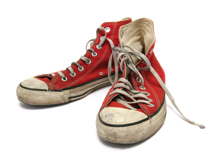Tinea (ringworm) is a common fungus that can affect all parts of the skin, hair or nails. It enjoys hot, sweaty conditions and recurs frequently in the warm summer months.
Tinea is common on the feet (‘athlete’s foot’) where it typically causes moist, cracking, itchy skin between the toes and scaling on the soles. The toenails can also get thick and discoloured.

On the body, tinea can form round or oval red, scaly, itchy patches. As they expand the centre often clears creating a ring shape, hence the term ‘ringworm’. In the groin, tinea also causes an itchy, scaly rash (‘jock itch’).
Tinea is often caught from wet floors in change rooms and swimming areas. Other sources are shared towels or shoes and pets.
How to treat tinea
Over-the-counter anti-fungal creams, lotions and sprays work well in most cases, especially for smaller areas. Terbinafine is most effective and is used once daily for one week. Other treatments, e.g. bifonazole, clotrimazole, econazole, are also effective but take longer to work.
You should see your GP if these treatments are not working. Other skin problems can look similar to tinea and your GP can send a sample to the laboratory to confirm the diagnosis.
In severe or resistant cases your GP will need to prescribe tablets to clear the infection.
Tinea in the nail also requires tablets which can take up to 12 weeks to work. An alternative in mild cases is a medicated nail lacquer.
How to prevent repeated attacks
Keep your feet clean and dry!

